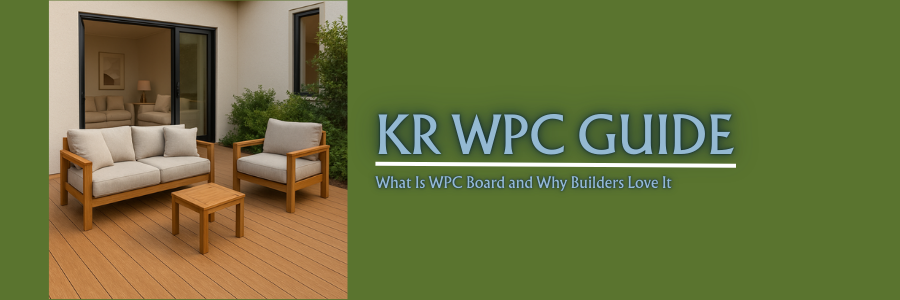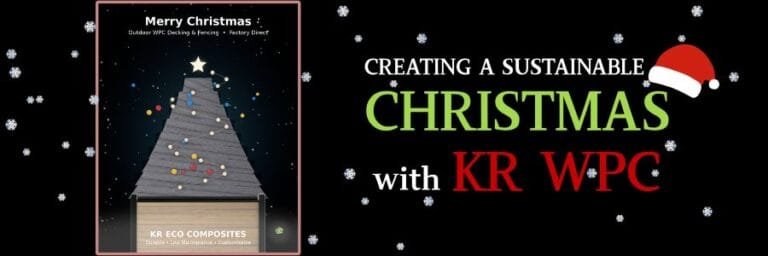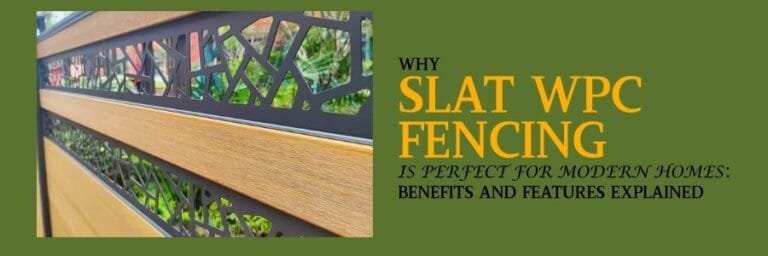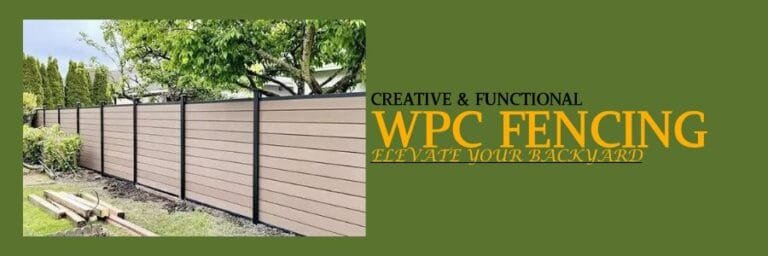When it comes to building durable, eco-friendly, and visually appealing outdoor spaces, one material is quickly gaining popularity: WPC board.
Short for wood plastic composite, WPC combines the strength of plastic with the natural look of wood, making it a top choice for decking, fencing, wall cladding, and more.
Kreco Composites, a leading manufacturer and global supplier of WPC products, we specializes in creating high-quality boards that offer long-lasting performance with minimal maintenance.
But what exactly is WPC? And why are builders, architects, and homeowners choosing it over traditional materials?
In this guide, we’ll walk you through everything you need to know about WPC boards.
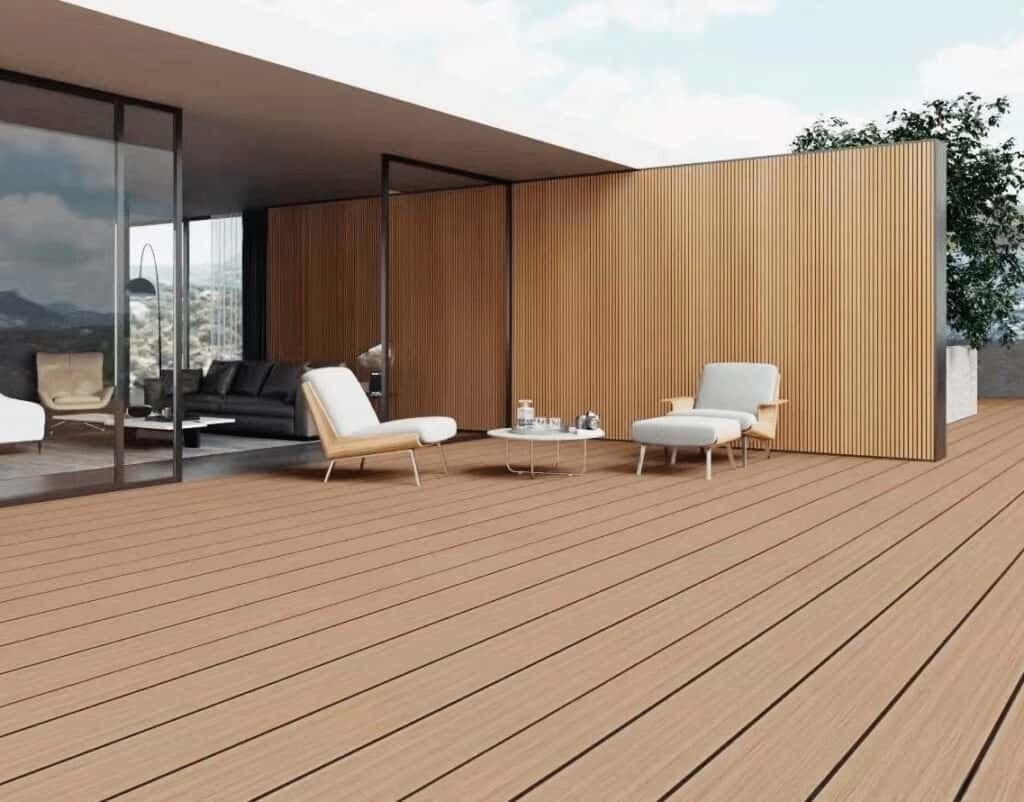
Why WPC Boards Are Gaining Popularity
In recent years, more and more builders, homeowners, and designers have been turning to WPC boards for their outdoor and indoor construction needs.
WPC is a modern material that offers the look of natural wood while solving many of its common problems such as like warping, cracking, and heavy maintenance.
As demand grows for durable, low-maintenance, and eco-friendly building materials, WPC is proving to be the smart alternative.
Shift Toward Durable, Low-Maintenance Materials
Consumers today are moving away from traditional wood because of its high cost and the constant upkeep it requires.
Natural wood may look beautiful at first, but over time, it tends to rot, fade, or get damaged by moisture, termites, or sun exposure.
It often needs sanding, sealing, staining, or painting just to keep it looking good.
WPC boards solve these problems. They don’t absorb water easily, don’t need repainting, and won’t crack or splinter like regular wood. This makes WPC a great choice for people who want the natural look of wood, but without the headaches.
Whether you’re building a backyard deck, a garden fence, or an exterior wall, WPC offers peace of mind with long-lasting results and very little maintenance.
The Rise of Hybrid Materials Like WPC
WPC boards are made by combining two key materials: wood fibers (or wood flour) and plastic polymers. This creates a hybrid material that gives you the best of both worlds. From the wood, you get the natural texture and appearance that people love.
From the plastic, you get durability, moisture resistance, and long-term strength.
WPC is also an eco-friendly choice. Many WPC boards are made from recycled wood and plastic materials, which helps reduce waste and protect forests. And because they last longer than natural wood, they don’t need to be replaced as often—making them a more sustainable option overall.
Builders and homeowners appreciate how WPC boards strike the perfect balance between beauty, strength, and sustainability. Whether it’s a poolside deck, balcony railing, or a privacy wall, WPC blends style with function for any setting.

KR WPC’s Role in Driving Reliable WPC Solutions
KR WPC is one of the most trusted names in the WPC industry. With years of experience and innovation, we’ve developed a wide range of engineered boards specifically designed for real-world use—whether it’s for decking, cladding, or fencing.
For example:
- WPC decking boards from KR WPC are perfect for patios, garden paths, or rooftop terraces. They resist weather damage, support heavy foot traffic, and require almost no maintenance.
- Composite wall cladding is ideal for building exteriors. It adds a modern look while protecting walls from rain, heat, and UV rays.
- WPC fencing panels offer privacy and security without the need for painting or frequent repairs. They maintain their color and shape even after years of sun and rain exposure.
At KR WPC, every board is crafted with precision using high-quality wood powder, high-density plastic (HDPE), and durable chemical additives. We also design our own molds and regularly update our styles to stay ahead of trends.
Whether you’re a professional builder or a homeowner taking on a DIY project, KR WPC offers solutions that are both reliable and easy to work with.
WPC Board Composition and Types
What WPC Boards Are Made Of
WPC boards are made by blending recycled wood fibers (like sawdust or wood flour) with thermoplastics (like high-density polyethylene or HDPE). These two components are combined with small amounts of colorants, bonding agents, and protective additives to create a strong, weather-resistant material.
- Recycled wood fibers provide the natural look and texture.
- Thermoplastics add strength, water resistance, and durability.
- Additives help improve UV protection, color retention, and fire resistance.
At KR WPC, every board is precisely crafted using custom molds to ensure consistent quality, strength, and appearance.
The result? A composite product that looks like wood but performs like plastic: strong, smooth, and long-lasting.
Common WPC Board Formats
WPC boards come in a variety of styles to suit different building needs. Here are the most common formats:
- Hollow Boards: These boards are lighter in weight and cost-effective. Ideal for fencing or areas with less foot traffic. They also help reduce material usage while still maintaining strength.
- Solid Boards: Denser and stronger, these are perfect for decking, heavy-use walkways, or commercial projects. They can handle more weight and impact.
- WPC Sheets: Flat, panel-like boards that can be used for furniture, cabinetry, or wall cladding. They offer design flexibility with the same water-resistant properties.
- Tongue-and-Groove Systems: These boards easily lock together, making them ideal for wall cladding, ceiling panels, or decorative uses. Installation is fast and smooth with a seamless look.
KR WPC offers all of these formats, each tailored to real-world applications so builders can work smarter and faster.
How WPC Compares to Other Materials (Wood, PVC, Plywood)
| Material | Durability | Maintenance | Eco-Friendly | Cost Efficiency | Appearance |
| WPC | Very high | Low | High (recycled) | High (long lifespan) | Wood-like, customizable |
| Wood | Medium | High | Medium | Medium (but high upkeep) | Natural, classic look |
| PVC | High | Low | Low (fully plastic) | High | Plastic-like, less natural |
| Plywood | Low-Medium | Medium | Medium | Medium | Limited to indoor use |
- WPC vs. Wood: WPC looks like wood but doesn’t rot, warp, or splinter. It also needs no staining or sealing.
- WPC vs. PVC: WPC feels sturdier and looks more natural than plastic-only boards. It’s better for areas where aesthetics matter.
- WPC vs. Plywood: WPC is water-resistant, making it a better choice for outdoor use, while plywood is prone to damage from moisture.
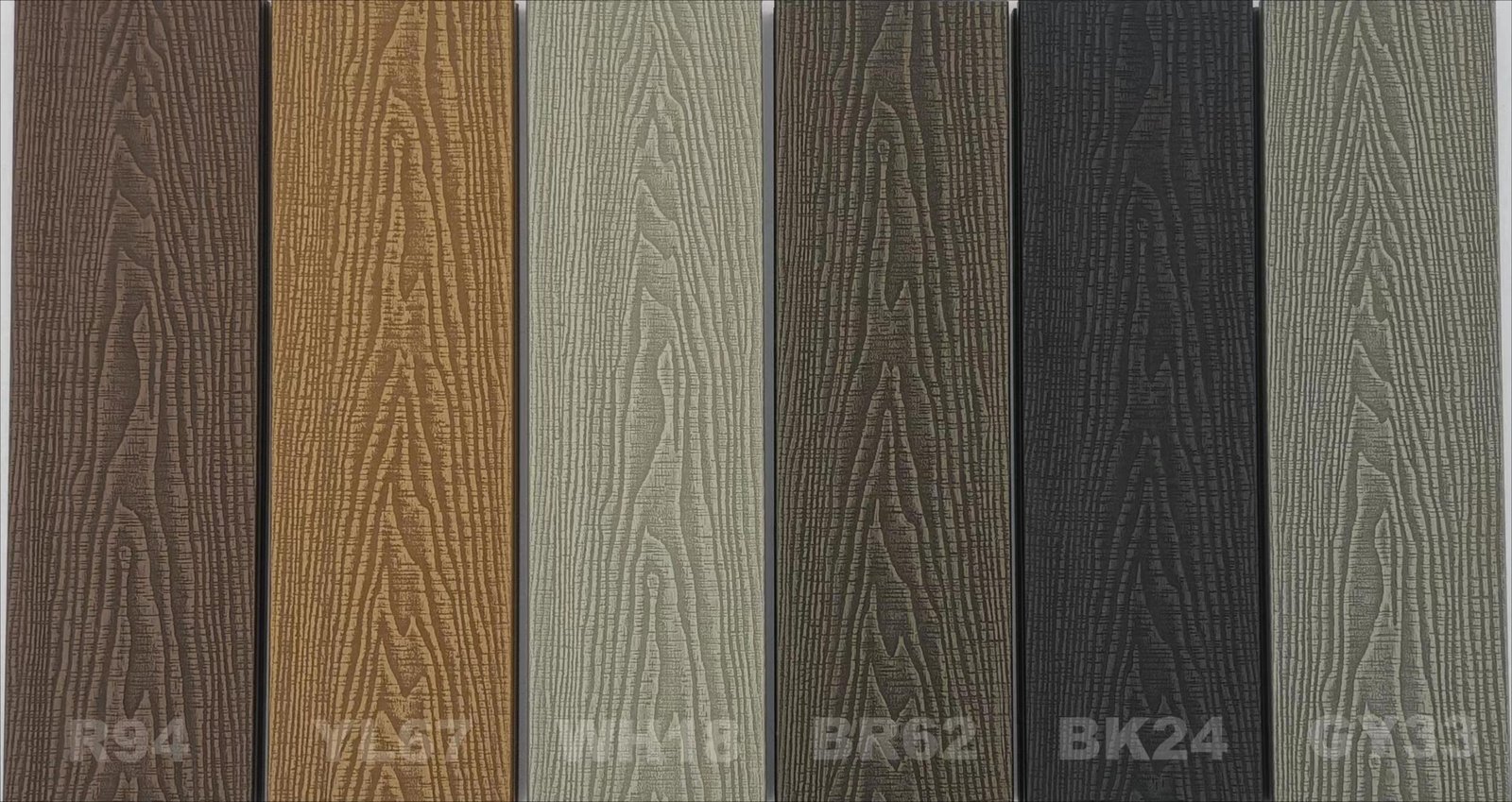
Applications: Where and How WPC Boards Are Used
Thanks to their strength, beauty, and resistance to weather, WPC boards are used in a wide range of projects—both at home and in public spaces. Whether you’re a homeowner renovating your garden or a contractor working on large-scale construction, WPC offers smart solutions that last.
Here’s how and where WPC boards are most commonly used:
Outdoor Decking Systems
WPC decking is one of the most popular applications. It’s perfect for:
- Patios
- Balconies
- Terraces
- Poolside areas
Unlike natural wood, WPC decking doesn’t rot, warp, or splinter. It stands up to rain, sun, and foot traffic without fading or needing repainting.
Many homeowners love that it keeps its appearance for years with just occasional cleaning—no sanding or sealing required.
Wall Cladding and Facades
WPC boards are a great choice for wall cladding, giving buildings a modern, clean look both inside and out.
- Exterior walls: WPC cladding acts as a protective layer against rain, wind, and UV damage.
- Interior walls: It adds texture and warmth to living spaces while being easy to maintain.
Because of its durability and design flexibility, WPC cladding is often used in residential homes, office buildings, and resorts.
Privacy Fencing and Boundary Walls
WPC fencing panels are ideal for:
- Home boundaries
- Garden fencing
- Privacy partitions
They offer a uniform and stylish look, while standing up to outdoor conditions like rain, heat, and humidity. Unlike wooden fences, WPC fences don’t crack, splinter, or attract termites. You get the visual appeal of natural wood—without the maintenance.
Indoor Decorative Panels and Furniture Framing
WPC boards are also used indoors for decorative and structural purposes, such as:
- Cabinet framing
- Room partitions
- Wall panels
- Furniture backing and cladding
They’re easy to cut, shape, and install, making them perfect for customized interiors. The smooth, consistent surface means you get a clean finish every time, ideal for both minimalist and modern design styles.
Commercial/Public Spaces
In high-traffic areas where both durability and aesthetics matter, WPC boards deliver long-term performance. They’re widely used in:
- Café patios
- Public walkways
- Resort decking
- Parks and recreational areas
- Shopping center seating zones
Because WPC can handle constant use, changing weather, and heavy loads, it’s a favorite for commercial projects where safety, appearance, and low maintenance are key priorities.
Key Advantages of WPC Boards
Weather & Water Resistance
WPC boards are built to handle the elements.
Unlike natural wood, WPC does not absorb water easily. This makes it ideal for outdoor use, especially in areas exposed to rain, humidity, or extreme heat.
It resists warping, swelling, and rotting, common problems with untreated wood. Whether it’s decking near a pool or exterior wall cladding, WPC maintains its shape and strength even in harsh weather.
Minimal Maintenance
Save time and effort with low-maintenance materials.
Traditional wood often needs sanding, staining, sealing, or painting to keep it looking good. WPC boards, on the other hand, require almost no upkeep. Occasional cleaning with water and a mild detergent is usually enough.
There’s no need to worry about termites, splinters, or mold growth—WPC boards stay clean and sturdy for years.
Aesthetic Flexibility
Get the look you want without sacrificing performance.
WPC boards are available in a variety of finishes, colors, and surface textures, ranging from natural wood grain to modern matte or embossed looks. They can easily match different architectural styles, whether you’re going for a rustic patio, a minimalist balcony, or a contemporary fence.
At KR WPC, new designs and molds are regularly introduced to stay ahead of design trends and customer preferences.
Environmentally Friendly
A sustainable choice for eco-conscious builders.
WPC boards are often made using recycled wood fibers and recycled plastics, reducing waste and preserving forests.
Since they last longer than wood and don’t need chemical treatments or frequent replacement, they also reduce environmental impact over time.
Choosing WPC helps promote greener construction without compromising on style or strength.
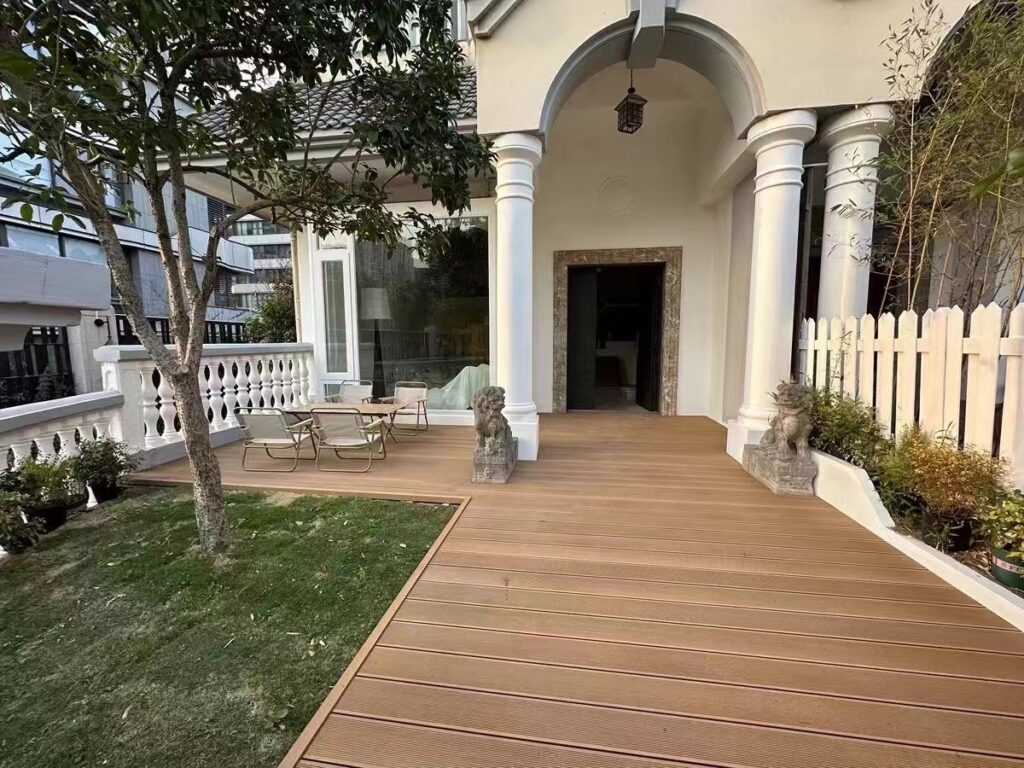
Understanding the Price Factors of WPC BoardsUnderstanding the Price Factors of WPC Boards
What Determines WPC Board Cost?
Several factors influence the price of WPC boards. These include:
- Material Density: Higher-density boards tend to be stronger and more durable, making them suitable for heavy-duty or commercial use. Denser boards require more raw materials and processing, which can raise the price.
- Surface Finish and Texture: Boards with advanced surface treatments—such as 3D embossing, anti-slip textures, or woodgrain effects—may cost more due to the additional design and molding work involved.
- Additives and Enhancements: Quality WPC boards often include protective additives like:
- UV stabilizers: Help resist sun damage and fading.
- Anti-mold and anti-mildew agents: Protect against fungal growth in damp environments.
- Fire-retardant compounds: Increase safety in commercial or high-risk areas.
These additives improve performance but may also slightly increase cost.
- Board Size and Format: Larger or thicker boards, and those with specialized formats (like tongue-and-groove systems or interlocking panels), generally cost more due to increased material and production requirements.
At KR WPC, we tailor our pricing to match the specific design, durability, and performance needs of our customers, ensuring the best value for every budget.
Cost vs. Long-Term Value
| Value Factor | WPC Boards | Traditional Wood / Plywood |
| Initial Cost | Moderate to High | Low to Moderate |
| Maintenance Needs | Minimal — no painting, sealing, or termite treatment required | High — requires frequent sealing, painting, and pest control |
| Durability | High — resists weather, moisture, insects, and UV damage | Low to Medium — prone to warping, rotting, and insect damage |
| Lifespan | 15–25+ years with minimal maintenance | 5–10 years (depending on climate and upkeep) |
| Replacement Frequency | Rarely needs replacement | Often needs replacement or repair due to wear and damage |
| Aesthetic Longevity | Maintains appearance and color for years | Fades and deteriorates without regular treatment |
| Environmental Impact | Often made from recycled materials; eco-friendly | Requires logging and chemical treatments |
| Property Value Impact | Enhances resale value due to durability and low upkeep | May decrease appeal if aged, damaged, or poorly maintained |
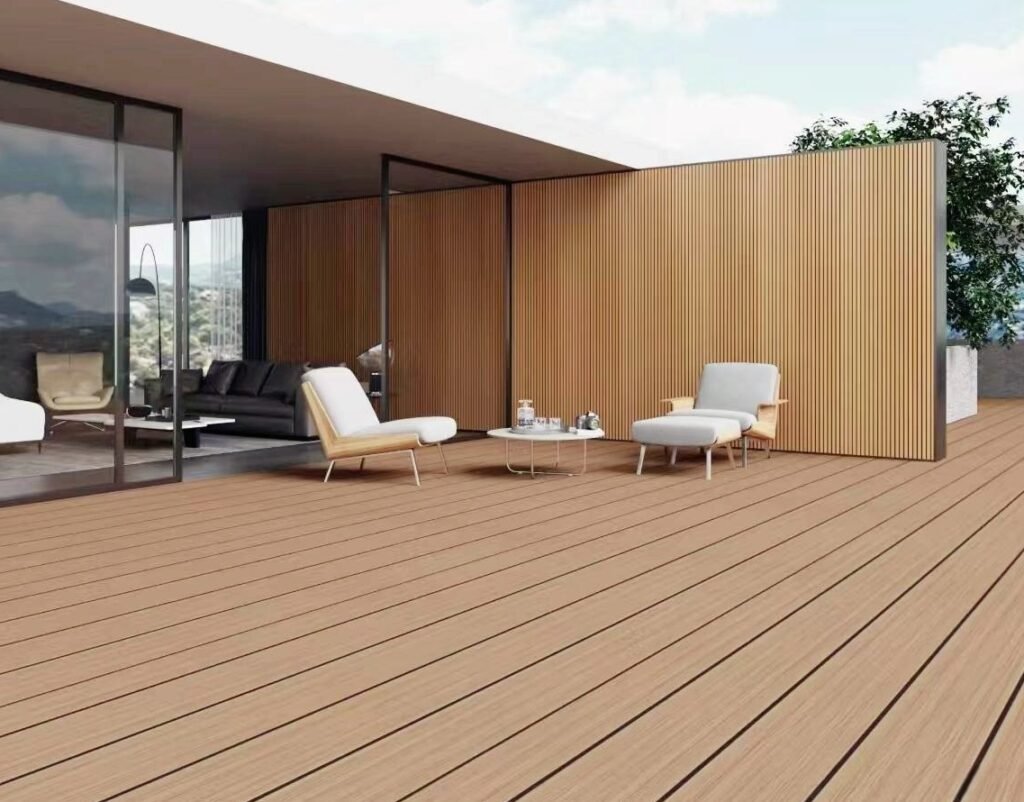
Conclusion: Is WPC the Right Choice for Your Project?
Choosing the right material can make or break your project—whether it’s a backyard renovation, a commercial outdoor space, or a new residential build.
Wood-Plastic Composite (WPC) boards offer a unique blend of durability, beauty, and sustainability that outperforms many traditional materials. But is it the right fit for you?
When to Choose WPC Over Other Boards
WPC boards are the better option when:
- Low maintenance is a priority: If you want to avoid sanding, staining, or sealing every few years.
- Your project is outdoors: Decks, fences, wall cladding, and garden paths benefit from WPC’s weather resistance.
- Longevity matters: For areas where materials are exposed to sun, rain, or heavy use, WPC lasts much longer than wood or plywood.
- You value design options: WPC comes in various colors, finishes, and textures—offering the natural beauty of wood without its downsides.
- Eco-conscious building is important: WPC is often made from recycled materials and helps reduce environmental impact.
Partnering with KR WPC for Quality, Design & Longevity
At KR WPC, we go beyond simply producing composite boards—we engineer solutions built for real-world use. Our products are:
- Precision-crafted using advanced molds and high-quality materials like HDPE, wood powder, and protective additives.
- Tested for performance, including resistance to fire, moisture, and heat.
- Regularly updated with fresh styles, colors, and formats to keep up with modern design trends.
- Globally trusted, with successful installations across 24 countries and regions.
By choosing KR WPC, you’re not only getting high-performance materials—you’re gaining a long-term partner dedicated to your success.
Building Smarter with Composite Innovation
WPC boards are changing the way we build, making projects more durable, beautiful, and sustainable.
Whether you’re a contractor, architect, or homeowner, switching to WPC means you’re investing in smarter building materials that save time, money, and effort over the years.
Ready to take your project to the next level? KR WPC is here to help you build better with cutting-edge composite innovation.
FAQ
Is WPC board waterproof and termite-proof?
Yes, WPC boards are highly water-resistant and do not attract termites, making them ideal for both indoor and outdoor use.
Where can I use WPC boards indoors and outdoors?
WPC boards are great for outdoor decking, fencing, and wall cladding, and can also be used indoors for cabinets, partitions, and decorative panels.
Can I paint or polish WPC boards?
WPC boards don’t require painting or polishing, but if desired, they can be coated with suitable exterior-grade paints or finishes for customization.
What’s the average price of WPC decking boards?
Prices vary based on size, finish, and density, but WPC decking boards typically range from $2 to $5 per linear foot.
How long does a WPC board last in outdoor settings?
With proper installation, WPC boards can last 15 to 25 years outdoors, thanks to their resistance to moisture, UV rays, and insects.

